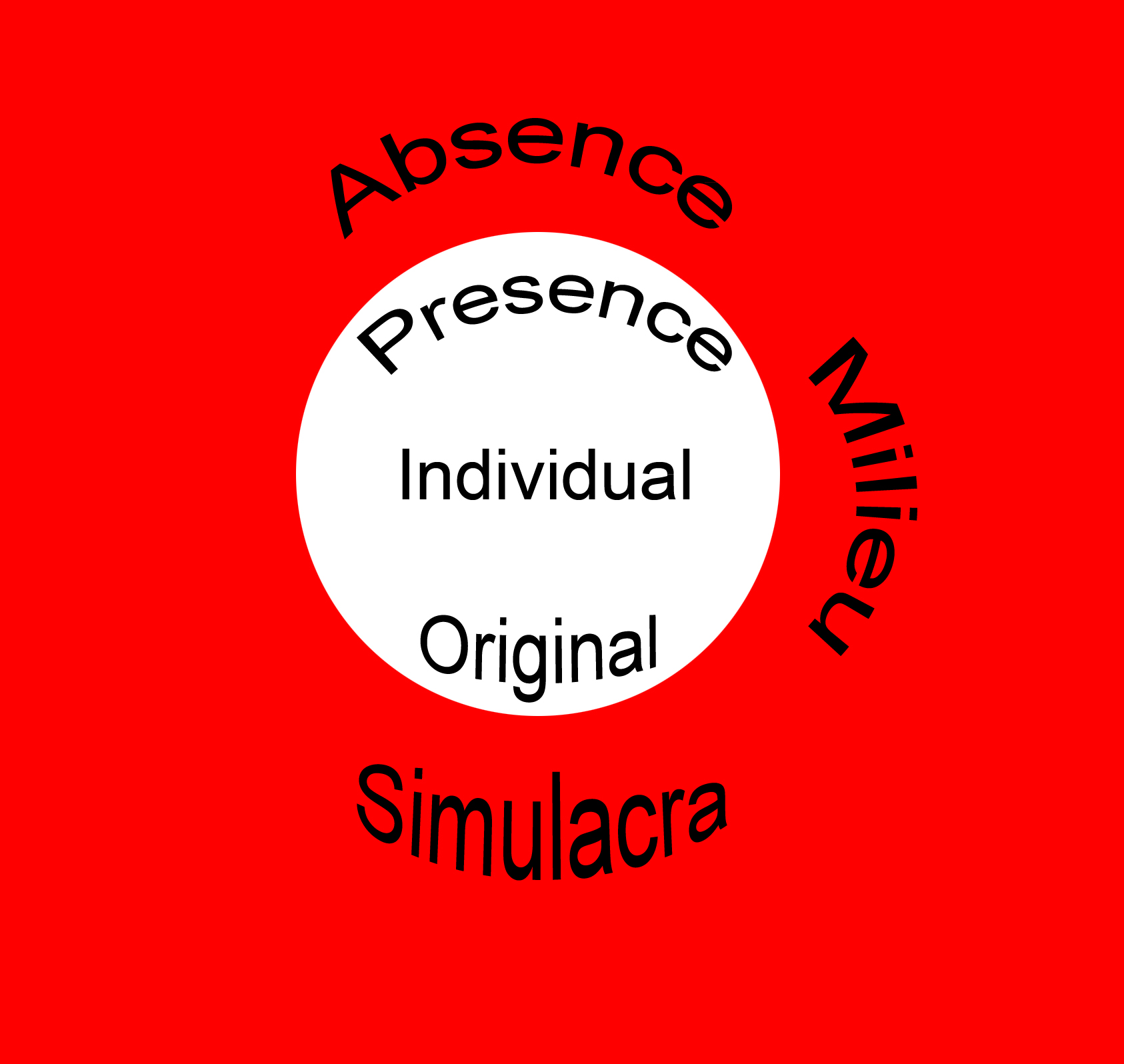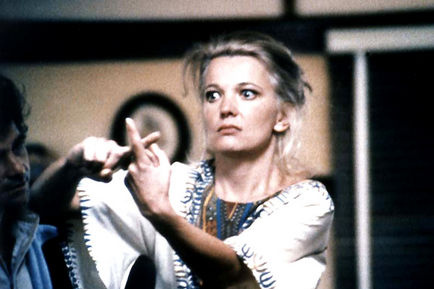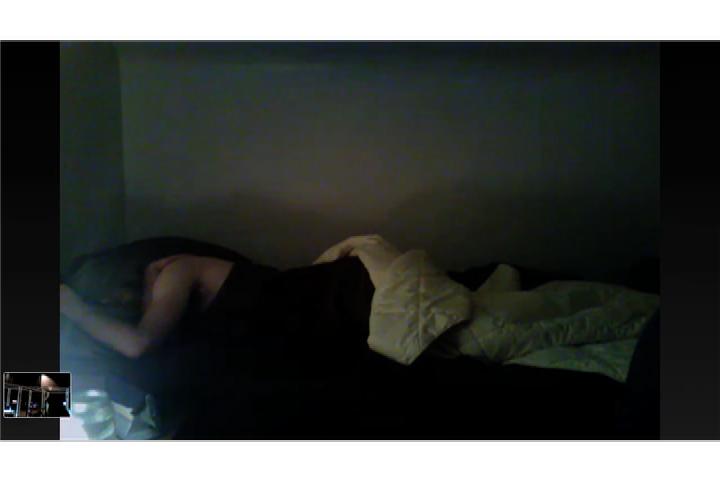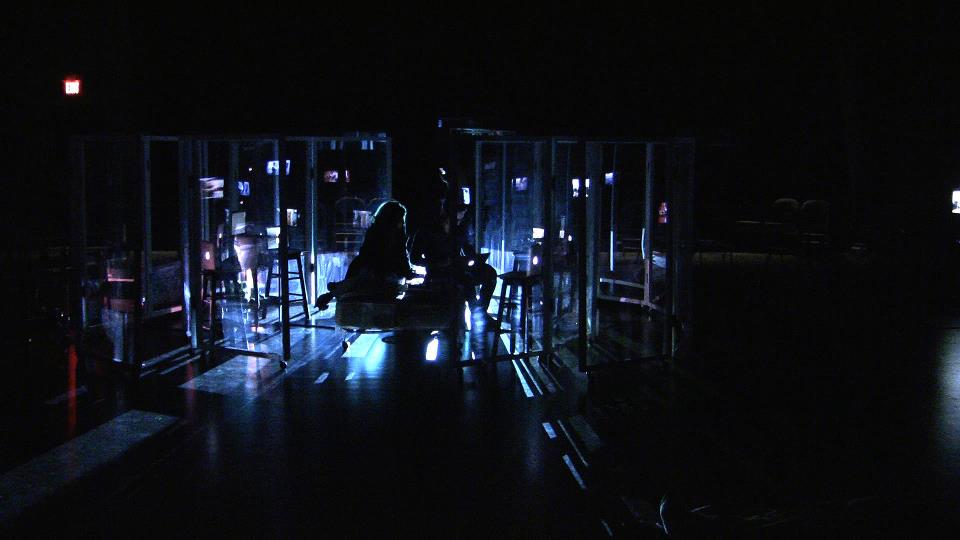————————————————————–
https://www.reconnectfestival.com/videos
————————————————————–
You can find Pegah Tabassinejad's MFA Thesis Project from the link below, including her Artist Statement, Research Paper, Dramaturgical Play and Video Documentation of her 52 hours performance and research during 3 years study in Interdisciplinary art at School for the Contemporary Arts, Simon Fraser University.
http://summit.sfu.ca/item/12713
————————————————————–
Here is the link to an article titled "The liminality of the presence of the performers: A research on character’s Individuation" written by Pegah Tabassinejad: read it here
————————————————————–
© Pegah Tabassinejad 2012
SIMON FRASER UNIVERSITY
Fall 2012
1. Monitoring [A Doll’s House]
1.1. Artist Statement
My MFA thesis project Monitoring [A Doll’s House] sits somewhere between theatre and visual art. The project consisted of three scheduled theatrical performances (based on Henrik Ibsen’s play A Doll’s House), which took place between 8PM and 9PM on Oct. 19-21, 2012, and a live installation (through Skype) that ran between performances. Monitoring [A Doll’s House], including the performances and live installation, featured seven actors who were performing four main characters from Ibsen’s A Doll’s House live on stage during the scheduled performances. They were also performing these characters virtually as well as being under the surveillance camera on Skype in the hours in between the performances. This project was almost a 50-hour durational piece that had repeated a structure of a virtual and a theatrical performance through 3 days. Audiences had the freedom to move around, use several different seats that had been placed for them and get as close or as far away from the piece as they wished. The performance was not happening on a delineated stage, as the space suggested a kind of gallery viewing.
![Figure 1.Monitoring [A Doll’s House], Video Documentation Still, Oct. 21st 2012](https://pegahtabassinejad.com/wp-content/uploads/2013/04/556911_10200096768964288_608340184_n.jpg?w=300)
11.2. Distance
Monitoring [A Doll’s House] testifies to a continued interest in notions of distance and privacy within interiors as well as everyday surveillance. One might say traditional concept of theatre might be defined as a group of people gathering together, at a certain time, in a certain location, to look through the imaginary 4th wall to the private life of others. Outsiders (the public) look at the private moment of the insiders (fictional individuals). At this time, the time of the performance, this group of people will agree to imagine to be at the time of the play, where (as John Searle is suggesting1) actors pretend to be fictional characters. The relation between the time of the play and the time of the performance is at the heart of the discourse for post-modern theatre2. Inevitably the notion of time suggests presence: one is suggesting the presence of the fiction, including the characters and the play; whereas the other implies the presence of the performance, including the performers and the audience. The latter values the now of the performance. The performance (or according to Guy Debord Spectacle) is all about exteriority and separation3. This separation requires understanding the distance that separates the audience from the performers; the performers from their characters; the performance from the play; the time of the performance from the time of the play. One could say the performance is mediated within these distances and plays with the arrival and departure of presence. In Monitoring [A Doll’s House] my attempt was to explore these ideas of presence4. I was aiming to create a performance that would be mediated within these distances. The practices of artists working in experimental theater such as The Wooster Group, The Forced Entertainment along with visual artists such as Dan Graham and Cindy Sherman, have influenced my conception of exploring presence through performance. My focus through this project was on the performers, the characters they are playing and its perception by their viewers (audience). My attempt was to make these three, performer – character – viewer, closer to the time of the performance. Where the performer and the viewer are physically present at this time, the character is the one that is missing as it belongs to the time of the play. In Monitoring [A Doll’s House] my attempt was to push the character towards the time of the performance and play with its presence and absence. And as far as the characters could be embodied by the performers and would be perceived by the viewers, both actors and the audience became part of this research of transforming between these two phases. Monitoring [A Doll’s House] as defined in the context of my research on presence in theater performances, investigated the play between presence and absence. Using Gilbert Simmondon’s idea of individuation5 and milieu6; and Deleuze’s original and simulacra7 as my tools, I explored the spatio-temporal relation between the positive image of the performance (the presence, the individual and the original) and its negative image (the absence, the milieu and the simulacra).

For the purpose of my research and this paper, I have called the spatio-temporal relation between these two aspects: distance, which is what I have been exploring in depth in my final thesis project. Accordingly, I have employed methodologies in order to explore this relationship: the distance between being the performers and becoming the characters as well as the audience and the performers.
1.2.1. Distance in Acting: Performing the Stars
Presence in theatre has mostly been defined as the presence of the actors in the performance8. According to Peggy Phelan, there is a division that happens between two states of being: being the performer and being the character9, (or perhaps even more accurately becoming the character). Focusing on Simmondon’s idea of individuation and how an individual is shaped within a milieu that surrounds it, I have tried to explore how the audience might perceive the character’s creation on stage and its existence within the space between being and becoming, between the individual and the milieu, between what it is and what it is not (presence and absence). My aim was to explore the distance between what might be perceived as being the performer and/or becoming the character and to see how the presence of the fictional individuals (characters) might be liminal in the audience’s view and seems to occur somewhere between these two zones.
Simmondon argues that there is no individual in advance. The individual has to be produced or come into being within an ongoing process of becoming. So the individual is filled with the potentials of further individuations, as it is not final. On the other hand, the milieu can be “the environment, the ecological niche or a territory”10 that encompasses the individual. It is the space that surrounds the living being. It is the negative image that becomes visible through each process of individuation. Following Simmondon’s argument in Monitoring [A Doll’s House], we accepted the fictional character as individuals and attempted to research and constructed the milieu of the character in order to see how a performer could individuate her character. Our exploration of the milieu of the character included strategies such as using video clips of movies and dance performances as source materials fed to the performers11. The performers themselves chose various scenes of film stars, TV stars, dancers or video art performers in order to copy their gestures. The sources were based on actors’ interest in certain stars or performers, no matter if the star was female or male. The goal for the actors was not just representing the stars but (as I was using this phrase during the rehearsals) to eat the source actors, own them, embody them, translate them to their characters’ gestural needs, mix them together and create something new, something original out of all the copies! By doing so, they created a new character, a simulacrum, which no longer belonged to their source models.

For me the milieu of Ibsen’s characters such as Nora could be the space that surrounds our expectations of who Nora is. We have tried to use any possibility from the sources to create the character’s habitual gestures. Out of any particular reason, the performers of Monitoring [A Doll’s House] happened to sit down, walk around, yawn or do anything random as they had been copying their source stars from the screens around them. Then those particular gestures happened to be superimposed on the words of their characters uttering them.
The performers were functioning as live translators. They were translating those movements constantly as they were watching them. Our aim was to translate the gestural movements of the source material to the immediate gestural needs of their characters. For example, there was a moment that Victoria Lyons’s source star, Irene Jacob, was blowing bubble gum, which she translated immediately to yawning. The point was that they did not have much time to process the translation with their mind but what that had to work with their body. In my view, this process of constant translation within the immediacy of the scene encourages their presence. They could not memorize (or in other words block) their characters’ gestures as they had been occupied by copying so many movements. So, they had to rely on the now, the present moment of the performance as everything was happening as the first time. Like sports players, they had been trained for doing techniques, but when the game starts it is pretty unpredictable and new.
Following the ideas of Michael Kirby12 and Hans Thies Lehmann,13 I was exploring creating characters that were mediated through the performer’s becoming the character and the audience’ reception of that. The space between the performers and the audience was where the characters appear and disappear. They were not created in advance but constantly shaped within a process of becoming.
1.2.2. Distance in Space: Glass Walls
My first attempt to create this distance was making a set for the performance out of glass walls that affected the distance between the audience and the performers and how the performance would be perceived. My goal was to create a space that reproduced itself at the moment of the performance. I wanted to create multiple Noras, Helmers, Christines and Krogstads as actual and virtual and to explore the distance between their various appearances. Also I wanted to present the performance as an art object, put in the space and allow the audience to observe it from every corner and angle. Using the glass walls and surrounding the performers and the audience between them, was my tool to create such an environment. The inspiration for the set design of this piece was largely influenced by Christopher Frank’s novel Deadly (Mortelle) (that reflects a society whose citizens are living in houses made of glass walls and are constantly under the surveillance camera.) In Monitoring [A Doll’s House] I made four moveable platforms, each containing five glass walls that had been defined the space between performers and the audience.
By separating the audience from the performers and the performers or the audience members from each other, these glass walls were not only exploring the actual distance between them, but also they affected their virtual distance. They were aiming to give the audience the freedom to be as close as they wanted to be to the performance, without feeling unsafe (as the glass walls were between them.) The audience could be in the middle of the performance, only one step away from a performer and watch the whole act through a glass wall. Being so close to the performers and watching them is the freedom that usually belongs to the audience of visual arts, when they are looking at an object. I was interested in creating a space where the audience of Monitoring [A Doll’s House] could have the freedom to look at the piece as an object and adjust their distance and angles, as they wished. What complicates this is the potential gaze of the performers looking at the audience. It is in that potential moment that the agreement of the time of the play might break to the time of the performance. The power dynamic changes in that moment and the audience may feel the boundary is broken, and when there is no boundary, there might be no safety. The feeling could be analogous to finding a stranger looking through the windows of your home. I wanted to see if the actors could be seen as objects to balance this gaze and to see if I could create an environment where the audience and performers, and their gaze, were close to each other, but still far.
Moreover, these glass walls created multiple views for the viewers. The audience could not only observe the actual actors, but they also had multiple views (if not thousands!) of their virtual reflected images. These virtual images had not been produced before as it was happening at the time of the performance (within the moment of now) and was disappearing as the performance moved on. They had been present and absent at the same time. They were somewhere between the actual performance and the gaze of their viewers and their existence had been in direct relationship with the distance of the audience to the glass. Above that, they had emphasized the distance between many Noras, Helmers, Krogstads and Christines that had been performed. They had been produced smaller and larger images of the characters, closer and further to the audience and the actual ones. They were superimposing the multiple virtual images on themselves and on the actual ones. I had no control on this function: of my virtual actors, of those other performances and other performers that had been appearing and disappearing. As a result they had produced multi narrative performances depending on the audience’ experience of watching the piece.
![Figure 6.Monitoring [A Doll’s House], Video Documentation Still, Oct. 21st 2012](https://pegahtabassinejad.com/wp-content/uploads/2013/04/sequence-8-copy.jpg?w=300)
In some way the project is not so much about Ibsen’s A Doll’s House, but the ongoing appearance of the play. The event occurs between the actual performance and its reflected and multi viewed images. It happened between the actions that were getting enacted and their reflected appearance.
1.3. Privacy: The Distance of the Gaze!
Fascinated by the unseen lives of people within their interiors, I chose Ibsen’s A Doll’s House to create a performance located within inside interiors. The difference between the life one leads outside, in public, and the life one leads inside, where one hides oneself and does not share that life with the public, has always been very striking to me. Walls create a distance within the public realm and separate the lives of individuals from the gaze of the others. On the other hand, windows open the view to the outside world and invite the others’ gaze inside. Paul Virilio defines windows as doors, actual windows, TV (what he calls the third window) and Internet. Without these windows he suggests there are no interiors.14 Through these windows one looks at the world outside. As soon as one of these windows would be open, the information would be exchanged and the border between the private and public would be blurred. We imagine we can watch without being watched, but are we really safe from being watched? By constantly absorbing the models/information/data from external sources, one’s privacy can be influenced by the public world. This can move to an extreme that even one’s identity could be affected and shaped by what one is constantly watching from the outside world. According to Brian Massumi “We do not act, but neither do we merely receive. We absorb through our open eyes and mouths. We neutralize the play of energized images in the mass entropy of the silent majority.”
Monitoring [A Doll’s House]’s live installation was an attempt between the public and the private place. By exploring the distance between the performers and their viewers, I wanted to examine how actors would perform inside their private space for a gaze that was kilometers from them and how this distance might affect the audience view. Seven actors were online on Skype from 12am until 5pm on Oct. 20th and 21st; whether performing Ibsen’s characters or simply doing their everyday life activities (such as sleeping, cooking, watching TV etc). The viewers at the theatre were watching the actors’ private space and their performance: being themselves and becoming the characters. There was a single bed for the audience, surrounded by seven laptops, representing the actors. There was no light other than the light of the laptops and two projectors facing the floor, projecting the pre-recorded images of everyday lives of people within their interiors.
![Figure 8.Monitoring [A Doll’s House]-Installation, Skype Snapshots, Oct. 20th](https://pegahtabassinejad.com/wp-content/uploads/2013/05/angela.png?w=300)
![Figure 8.Monitoring [A Doll’s House]-Installation, Skype Snapshots, Oct. 20th](https://pegahtabassinejad.com/wp-content/uploads/2013/05/aryo1.png?w=300)

![Figure 8.Monitoring [A Doll’s House]-Installation, Skype Snapshots, Oct. 20th](https://pegahtabassinejad.com/wp-content/uploads/2013/05/aryo2.png?w=300)
![Figure 8.Monitoring [A Doll’s House]-Installation, Skype Snapshots, Oct. 20th](https://pegahtabassinejad.com/wp-content/uploads/2013/05/victoria.png?w=300)
This configuration shifted the public space to an intimate private one where the viewers were exposed to the private worlds of others that that were revealed to the world. Walls of their private interiors had been removed and replaced by the windows of Skype. The space between the audience and the performers was at its maximum level and the gaze of the audience was mediated through the lens of the laptops’ cameras. The actors were performing for the camera of their laptop without being able to know who is watching them, as they had a very limited view of the theatre.

Monitoring [A Doll’s House]’s live installation was also questioning presence and its relation to their distance with their viewers. The actors had no physical entity at the place of the installation, but they were offering the presence of their images. Their virtual presence had even been reproduced and multiplied by the glass walls that were surrounding the laptops. The actors were not there, at the theatre, at the time of the installation; however their multiple live images were there, suggesting their presence.
© Pegah Tabassinejad 2012
SIMON FRASER UNIVERSITY
Fall 2012
All rights reserved. However, in accordance with the Copyright Act of Canada, this work may be reproduced, without authorization, under the conditions for “Fair Dealing.” Therefore, limited reproduction of this work for the purposes of private study, research, criticism, review and news reporting is likely to be in accordance with the law, particularly if cited appropriately.
Footnotes
1“A fictional story is a pretended representation of a state of affairs; but a play, that is, a play as performed, is not a pretended representation of a state of affairs but the pretended state of affairs itself, the actors pretend to be the characters.” (Presence in Play: A Critique of Theories of Presence in the Theatre 11)
2 “The “Now” of the dramatic fiction has often stood in a problematic relation to the “Now” of the dramatic medium- the stage and its physical properties.” (Presence in Play: A Critique of Theories of Presence in the Theatre 16)
3 “The spectacle is the reign of vision, and vision is exteriority – that is, self-dispossession. The malady of spectating man can be summed up in a brief formula: ‘the more he contemplates, the less he lives’ […] The ‘contemplation’ denounced by Debord is contemplation of the appearance separated from its truth; it is the spectacle of the suffering produced by that separation: ‘Separation is the alpha and omega of the spectacle’. ” (The Emancipated Spectator 10)
4 For Gumbrecht, Presence refers to a spatial relationship to the world and its objects.
5 “The living being is also the being that results from an initial individuation and amplifies this individuation. In the living being, individuation is brought about by the individual itself, and is not simply a functioning object that results from an individuation previously accomplished. […] The living individual is a system of individuation, an individuatinq system and also a system that individuates itself.” (The Genesis of the Individual 305)
6 “A milieu is what the fly inhabits, an indeterminable but limited space highlighted through significant elements or qualities- cues to prey, rivals, love objects, and so on.”(Chaos, Territory and art 46)
7 Brian Massumi defines Simulacrum, as it is “a copy of a copy whose relation to the model has become so attenuated that it can no longer properly be said to be a copy. It stands on its own as a copy without a model.” And according to Deleuze he mentions that “the simulacrum is less a copy twice removed than a phenomenon of a different nature altogether: it undermines the very distinction between copy and model.” (Realer than Real)
8 Elizabeth LeCompte, the artistic director of The Wooster Group, has noted that: “’Presence’ is something that I think is…always in conversation with the formal pattern. The formal pattern will tend to allow the performer to get lulled into feeling safe…the constant battle for me as a director is to find ways that an actor can be always present, always alive, always thinking this is the first and last moment that she’s there-doing this thing.” (Performing Presence 239)
9 According to Peggy Phelan “Since Stanslavski, when actors are observed carefully and perform well, they are said to have ‘presence’. The actor achieves ‘presence’ through performing as if another” (Unmarked: the Politics of Performance 17). This argument is quite consistent with how Phelan divides the figure of a performer from the figure of the character he or she enacts.
10 Grosz, E. A. Chaos, Territory, Art: Deleuze and the Framing of the Earth. New York: Columbia UP, 2008. Print.
12 Kirby, Michael. “4 On Acting and Not-Acting.” Acting (re)considered: Theories and Practices. London: Routledge, 1995. N. pag. Print.
13 Hens Thies Lehmann suggests that the actor of Post-dramatic Theatre is often no longer the actor of a role but a performer offering his or her ‘presence’ on stage for contemplation. (Postdramatic Theatre 135)
14 “The Third Window: An Interview with Paul Virilio.” Global Television. Cambridge, MA:MIT Press, 1988. 185-197.
15 “Realer than Real: The Simulacrum According to Deleuze and Guattari.” Realer than Real: The Simulacrum According to Deleuze and Guattari. N.p., n.d. Web. 13 Nov. 2012.
References
Frank, Christopher. Mortelle. Paris: Editions Du Seuil, 1967. Print. Giannachi, Gabriella, and Nick Kaye. Performing Presence: Between the Live and the
Simulated. Manchester, UK: Manchester UP, 2011. Print. Grosz, E. A. Chaos, Territory, Art: Deleuze and the Framing of the Earth. New York:
Columbia UP, 2008. Print.
Gumbrecht, Hans Ulrich. Production of Presence: What Meaning Cannot Convey. Stanford, CA: Stanford UP, 2004. Print.
Kirby, Michael. “4 On Acting and Not-Acting.” Acting (re)considered: Theories and Practices. London: Routledge, 1995. N. pag. Print.
Lehmann, Hans-Thies. Postdramatic Theatre. London: Routledge, 2006. Print.
Phelan, Peggy. Unmarked: The Politics of Performance. London: Routledge, 1993. Print.
Power, Cormac. Presence in Play: A Critique of Theories of Presence in the Theatre. Amsterdam: Rodopi, 2008. Print.
Rancière, Jacques, and Gregory Elliott. The Emancipated Spectator. London: Verso, 2009. Print.
Massumi, Brian. “Realer than Real: The Simulacrum According to Deleuze and Guattari.” Realer than Real: The Simulacrum According to Deleuze and Guattari. N.p., n.d. Web. 19 Dec. 2012.
Simmondon, Gilbert. “The Position of the Problem of Ontogenesis” previously appeared as “The Genesis of the Individual” (trans. Mark Cohen and Sanford Kwinter) in: Crary, Jonathan and Sanford Kwinter, eds. Incorporations. New York: Zone, 1992. 296-319.
Schneider, Cynthia, and Brian Wallis, eds. “The Third Window: An Interview with Paul Virilio.” Global Television. Cambridge, The MIT Press, 1988. 185-197.Print.